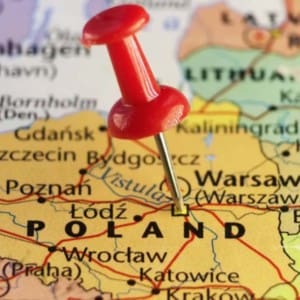Poland has historically been a country that has seen very little immigration from non-European countries, but 2022 shows that this historical trend is changing even under a conservative government. New data shows that large increases in foreign labor from countries like India, Turkey and Uzbekistan were recorded.
In 2022, 2.3 million work permits were issued to foreigners in Poland for various activities. These could be related to a variety of reasons, including notifications from employers about the intention to employ a foreigner, notifications of employment based on a special law for refugees, and others.
Of these 2.3 million permits, one category, “work permits for foreigners,” saw 365,000 issued. Out of those, 85,000 were for Ukrainians. In 2021, 504,000 permits were issued, of which 325,000 were for Ukrainians. There has therefore been a rise in the number of permits issued to citizens of countries other than Ukraine.
[pp id=74755]
Over 40,000 were issued to workers from India, 33,000 to people from Uzbekistan, 25,000 to Turks, 22,500 to Filipinos, 20,000 to Nepalese and just over 18,000 to Belarusians, according to Polish news portal Strefabiznesu.pl.
Apart from Belarusians, this marks a considerable increase in the number of permits issued. The rate of increase was 240 percent for Turks, 171 percent for Indians, 122 percent for workers from Uzbekistan, 85 percent for Nepalese and 70 percent for Filipinos. Most of the permits were issued to manual workers and craftsmen (128,000), skilled workers (69,000) and office staff (22,000).
It is important to note that Polish statistics are messy and unclear to some degree, and in some cases, one foreigner can have multiple types of permits. Remix News is unable to verify how many foreigners overall came into Poland on various work permits, or what the European and non-European entry numbers are for over 1.9 million permits issued to foreigners.
[pp id=64638]
Poland has an incentive to bring in more non-European migrants to feed its labor pool. The war in Ukraine has had by far the largest outsized effect in reducing European-origin migration. The Ukrainian share in the requests for work permits filed by employers was down from 82 percent of the total in 2021 to 58 percent in 2022.
For most of 2022, many Ukrainians could find work in Poland without needing a permit, as a result of special legislation to help refugees that was passed after the Russian invasion of Ukraine.
However, despite the fact that close to 800,000 Ukrainians were working in Poland on the basis of the emergency legislation, some sectors of the economy, such as construction and logistics, that had in previous years benefitted from male Ukrainian workers, were hit hard.
As a result of the war, there has been a sharp increase in the number of Ukrainian women entering the Polish labor market and a downturn in the number of Ukrainian men employed in Poland.
According to a survey of Poland’s labor market, a quarter of companies reported an increase in recruitment and employment, and 8 percent reported staff shortages as the biggest challenge facing them besides inflation or a fall in orders.






